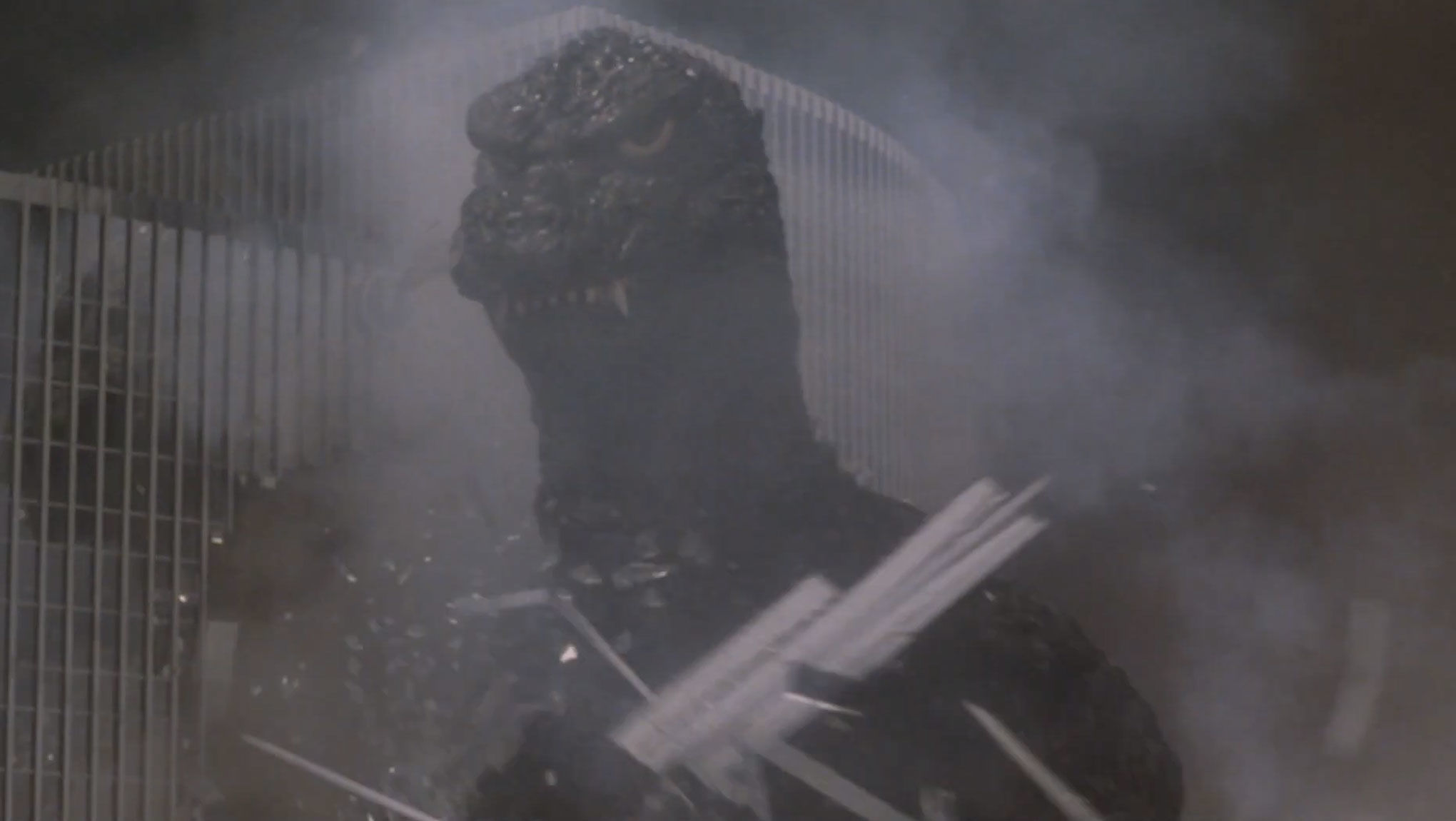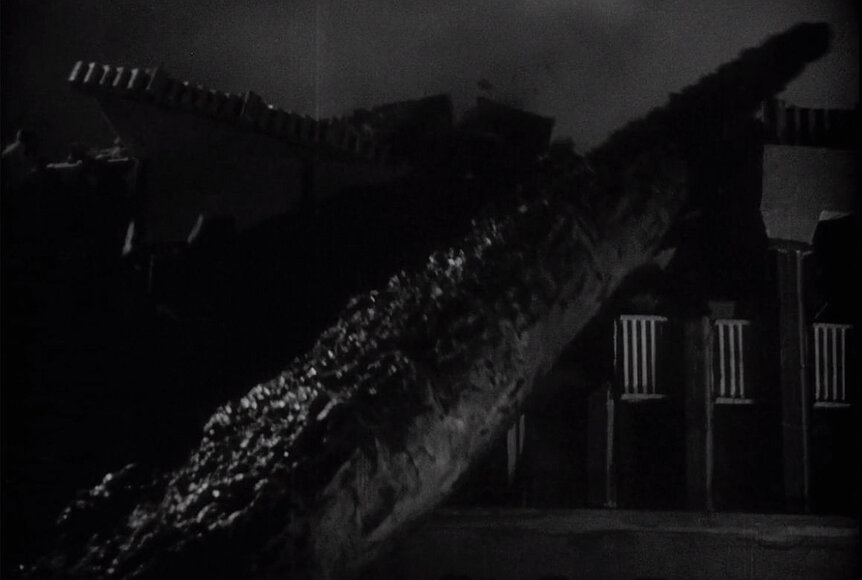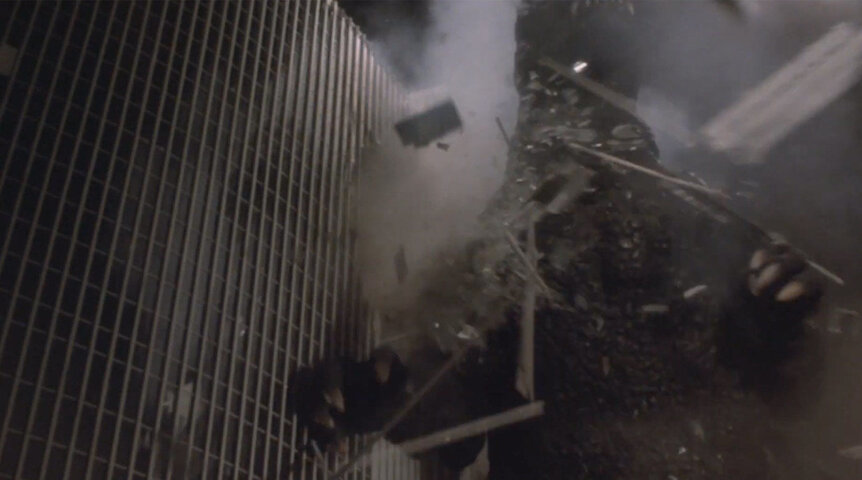Create a free profile to get unlimited access to exclusive videos, sweepstakes, and more!
WTF Moments: Those times Godzilla actually killed the audience

Ever since his introduction to audiences six and a half decades ago, the King of the Monsters has made a point of flattening one city after another — either in an act of aggression or by accident while in combat with other monsters.
And yet, even though Godzilla's violent behavior often results in disaster for Japanese real estate, human casualties in his movies are usually implied rather than depicted. With a few notable exceptions, most Godzilla films just show civilians fleeing from the monster; we assume there are people inside those high-rises he tears apart, but we seldom see actual bodies, allowing for a less unsettling experience. Probably for the best, as there were two instances when Godzilla demolished the very buildings that Tokyo moviegoers were sitting in — so audiences were, in essence, watching themselves being "killed" by Godzilla.
Having Godzilla wipe out a metropolis is never as simple as it sounds; there’s a lot more to it than just setting up a random smattering of model buildings and telling the Godzilla suit actor to “go to town.” The buildings he destroys are picked out in advance, and the models are carefully pre-cut so that the suit actor can break them on cue. (The structures that are not meant to be destroyed are built rock-solid in order to remain in one piece.) So when director Ishiro Honda and special effects technician Eiji Tsuburaya planned Godzilla’s original rampage in 1954, it was no accident that he caused some structural damage to Toho Studios' very own Nichigeki Theater.
Originally opened in 1933 in Tokyo's entertainment district, the Nichigeki Theater was one of the studio’s most successful movie houses, and it was here that many Tokyo residents would’ve seen Godzilla when it came out in 1954. Audiences sat back in horror as the eponymous monster tore down recognizable landmarks such as the Wako Department Store’s Hattori Clock Tower; and some viewers were truly alarmed when he strolled past a highly detailed miniature representing the Nichigeki Theater — the very building they were sitting in — and then smashed part of it with his tail.
Although there was no human carnage in this particular shot, the destruction provoked a sizable reaction from many Japanese moviegoers.
Three decades later, Godzilla marched on civilization once more, in 1984’s The Return of Godzilla — and this time he unleashed his destructive powers in the midst of a bigger, more modernized Tokyo.
In preparing for the climax of this film, director Koji Hashimoto consulted engineering experts to calculate the manner in which certain buildings in Tokyo would crumble if struck by something of Godzilla’s size. After this, Hashimoto and special effects director Teruyoshi Nakano started planning Godzilla’s path of destruction in the Yurakucho district — throwing in a nice little homage to the original 1954 film while they were at it.
By the time of this film, the old Nichigeki Theater was gone, having been torn down three years earlier. Taking its place was the Yurakucho Mullion Building, a much larger, slightly curved high rise with an exterior made up of reflective windows. Opened in October 1984 (just a few months prior to this film’s release), the Yurakucho Mullion Building served as home to a number of retail outlets and convention halls as well as a couple of movie theaters — namely the brand-new Toho Cinemas Nichigeki. The staff behind The Return of Godzilla kept all of this in mind as they plotted out the monster’s 1984 rampage.
At one point early on in his attack, Godzilla stomps past the Yurakucho Mullion Building and subsequently crashes into it after his foot breaks through the street. The 80-meter-tall monster collides with the building and then angrily lunges forward, gouging out a huge chunk of infrastructure with his claws, an avalanche of debris pouring to the ground.
In filming this scene, the staff specifically planned it so that Godzilla would tear open a particular section of the building’s upper floors, as this was where Toho Cinemas Nichigeki — and the audience watching the film — would’ve been located. American film critic Dave Kehr saw The Return of Godzilla during a trip to Tokyo and later recalled the "rare frisson of watching it in one of the very buildings destroyed by [Godzilla] during his climactic saunter."
So, the next time you're watching a Godzilla movie, maybe try to be aware of whether the ground is shaking. That giant foot on the big screen could be about to crash through the ceiling of your theater.




























